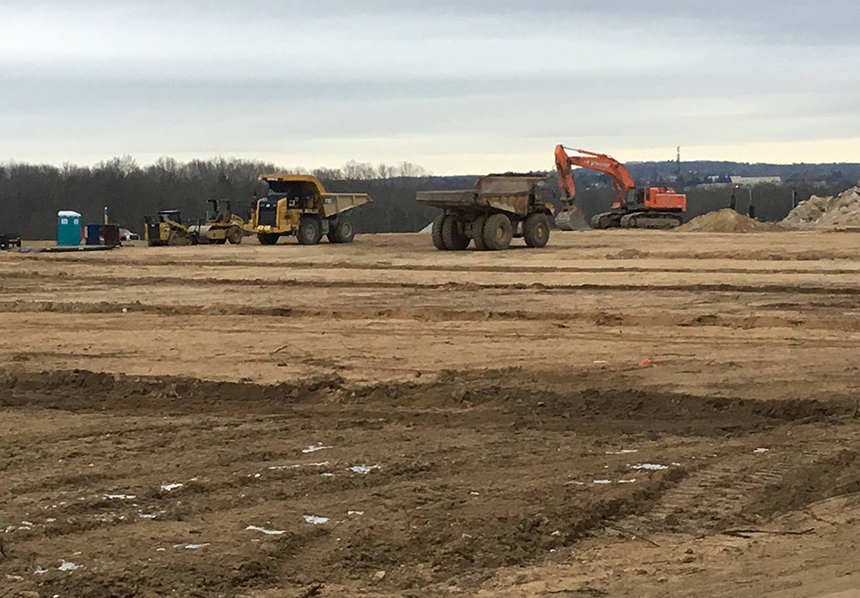 |
| Some 60 acres of forestland in western Cranston were clear-cut to make room for a 60,000-panel solar facility. (Douglas Doe) |
Rhode
Island’s rush to site renewable energy on open space and clear-cut forest to
make room has become a contentious issue, with
Cranston, Exeter and Hopkinton among the places where resident pushback has
been strong.
“Making
renewable energy more affordable and accessible has been a top priority of this
administration, and today’s announcement builds on the progress we have
made,” Office of Energy Resources (OER)
commissioner Carol Grant said.
“There is so much underutilized space — from parking garages, to rooftops, to former industrial complexes. By retrofitting these spaces with new solar panels, we will continue to lower our carbon footprint and to meet the growing demand for [renewable] energy.”
“There is so much underutilized space — from parking garages, to rooftops, to former industrial complexes. By retrofitting these spaces with new solar panels, we will continue to lower our carbon footprint and to meet the growing demand for [renewable] energy.”
The initiatives announced July 19 were developed during the past year with input from various stakeholders, including municipal planners, environmentalists, farmers, government agencies, businesses, developers, and concerned residents.
The
new initiatives are as follows:
Brownfields.
Former industrial or commercial sites where future use is affected by
environmental contamination are often ideal locations for
renewable-energy projects. Starting this fall, renewable-energy projects that
are sited on brownfields will be eligible for financial incentives from the
Renewable Energy Fund. A million dollars will be earmarked specifically for
this initiative, according to OER.
Rooftops.
The state agency, in coordination with the Distributed Generation Board, is
proposing an increase in the number of megawatts of capacity available for
rooftop solar under the
2019 Renewable Energy Growth Program. Under this proposal, the cap would be raised 27 percent to nearly 9 megawatts, allowing more homeowners across the state to access the program starting in the spring 2019. This proposal is subject to review by the Distributed Generation Board and Public Utilities Commission in late 2018, according to OER.
2019 Renewable Energy Growth Program. Under this proposal, the cap would be raised 27 percent to nearly 9 megawatts, allowing more homeowners across the state to access the program starting in the spring 2019. This proposal is subject to review by the Distributed Generation Board and Public Utilities Commission in late 2018, according to OER.
Carports.
OER has proposed that solar arrays installed over parking areas be made
available for the first time under the Renewable Energy Growth Program. The
proposal is also subject to the same review and approval process as the
small-scale solar proposal.